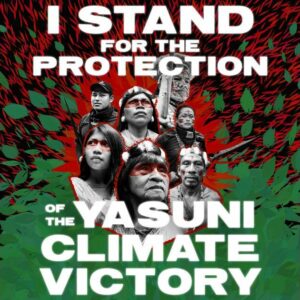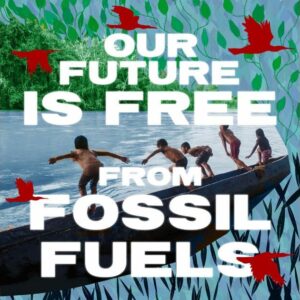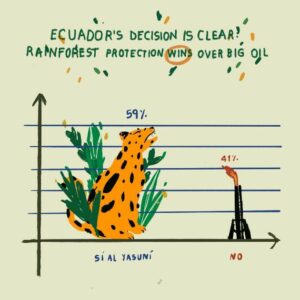Women are on the frontlines of the struggle against extractivism in defense of territories and life on Earth.
International Women’s Day, on March 8th, is a time each year when we mobilize to demand respect for women’s rights
It’s a time to amplify their cry against the injustice and violence that affect women across the world. In the Amazon rainforest, women are raising their voices to fight against the violence linked to resource extraction. Extractivism threatens women’s health, their homes, their lives, and the lives of their families.
In this special editorial for Women’s Day, we share with you the powerful messages of five remarkable women leaders from the Ecuadorian Amazon as they reflect on what it means to defend their territory.
The struggle against extractivism — and the battle to defend Indigenous territories and life all over the planet — is sustained by women. They are guardians of the forest and their culture. They are on the frontlines of marches, often carrying their children in their arms, and they participate in legal actions to reclaim their lands and rights. They are the face of the call for global action.
They put their bodies on the line…
…because women’s bodies are often the first to suffer the profoundly violent impact of oil extraction, mining, and deforestation. While the threats of climate change are felt worldwide, women are deeply aware of the impacts of climate change within their own territories.
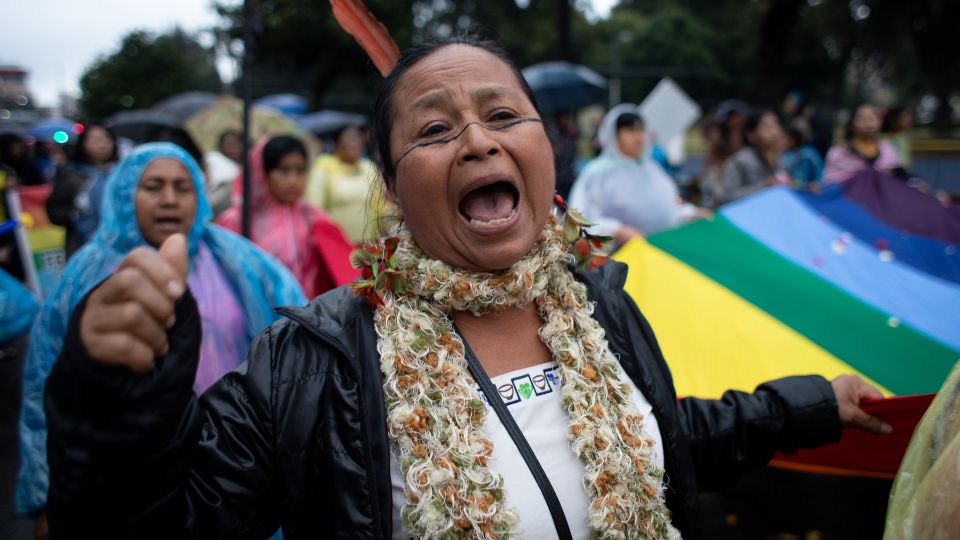
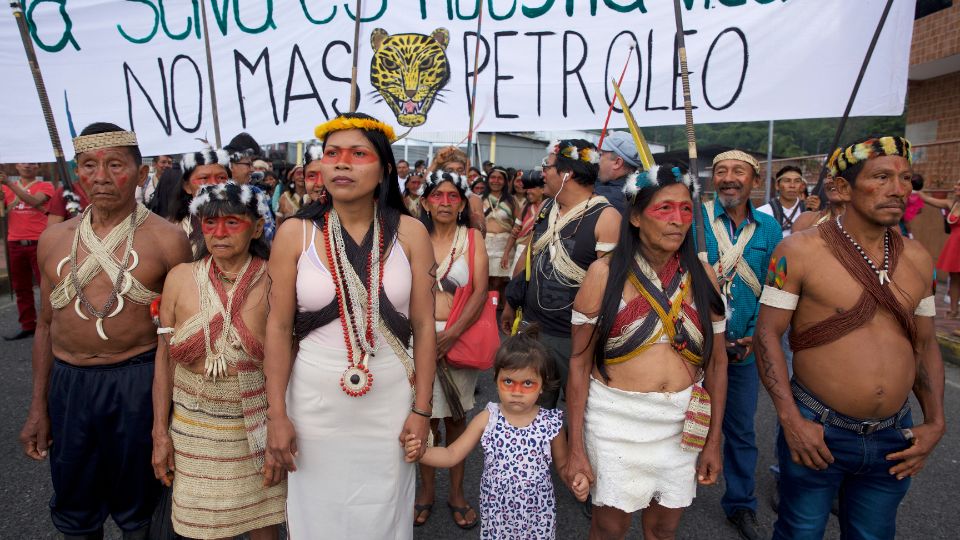
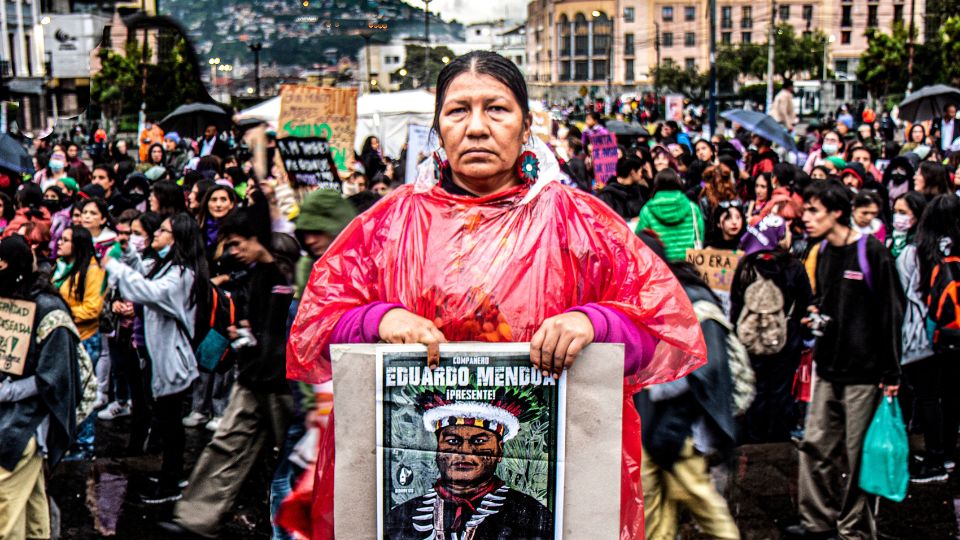
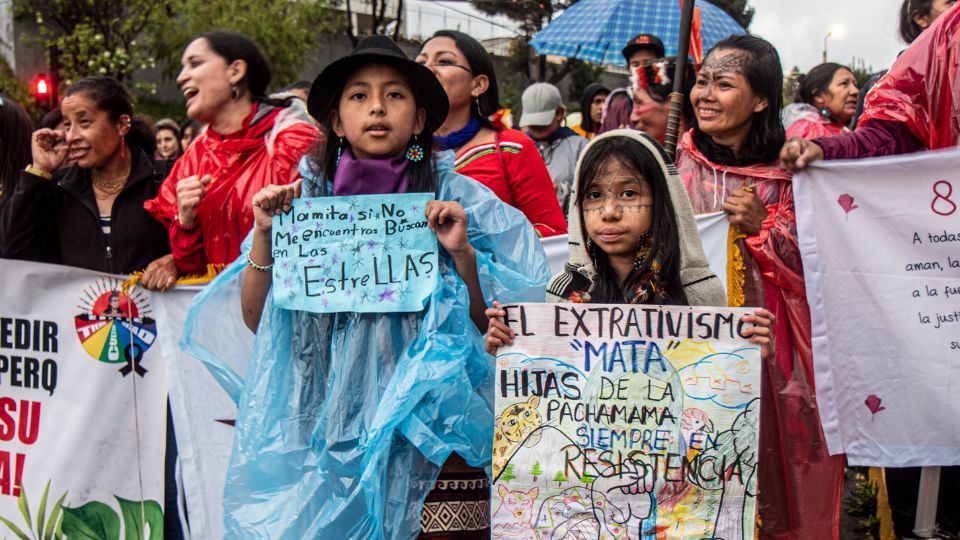
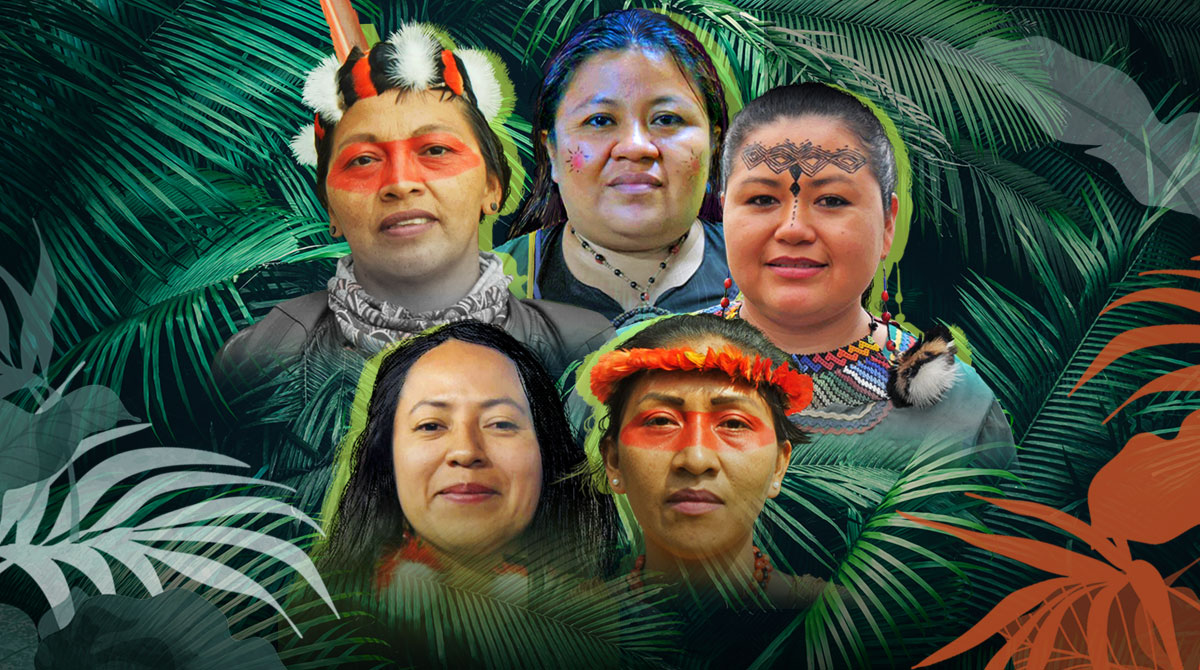
Indigenous women play a vital role in the fight to protect their territories
Indigenous women have a close relationship with their territory. This relationship is reinforced during daily walks in the forest, through their work, and in gathering food for themselves and their children. So when the forest is under attack, and they see trees being cut down and animals disappearing; when they see families divided due to conflicts provoked by extractive and corporate interests; when they see waters being contaminated, fishing stocks depleted, and invaders trespassing their lands – Indigenous women feel that their own bodies are under attack.
“Our bodies are like our territory itself. We fight for our right to survive and for the rights of nature. When the extractivist corporations invade and disrupt our territories, we feel it like a blow to our own bodies.”
Ene Nenquimo, Waorani leader
“We know that the Ecuadorian government wants to drill for oil in our territory. We don’t want the government to disturb our kawsak sacha — our living jungle — or the way of life we have in our territory. We will defend our territory and nature itself, to make them respect our community decisions.”
Diana Tanguila, Kichwa leader from Arajuno – Pastaza.
Under threat from extractive violence
The Ecuadorian Amazon and other areas with a high concentration of extractive activities — such as gold mining and oil drilling — are also among the most violent places in the world for women. This connection has been documented by human rights and feminist organizations in Ecuador including the Aldea Foundation, which reported that between 2014 and 2023 there were more than 114 femicides in the Amazon region. The provinces with the highest number of femicides were Sucumbios and Orellana, which are also the two provinces with the most oil wells.
As explained by Critical Geography, the reasons for this violence relate to the changes in family and community dynamics caused as a result of the activities of extractivist corporations. These changes include a devaluing of the work and care provided by women, the dispossession of territory, and the exposure of women to greater risks of sexual violence associated with male-centered environments.
The Ecuadorian State has failed to take responsibility to work to prevent and eradicate violence against women, and has instead permitted and promoted the presence of corporations in Indigenous territories, without community consultation. In this context, women in the Amazon are at the forefront of their people’s territorial defense processes, taking a stand against the violence that threatens them.
Left: Images captured during a drone flight over mining in the Napo region, Ecuadorian Amazon, February 2024.
Indigenous women lead solutions for climate justice & community resilience
The female leaders of the Amazon who were interviewed for this feature have taken on leadership roles in political organizations, they have patrolled their lands in the most remote areas of the forest; they have denounced violations of their human rights and collective rights, and rights of nature in the courts of law. They support and strengthen other women to grow as leaders.
They are dedicated to fostering their communities’ resilience, autonomy and cultural survival through processes that include the design of their people’s own educational systems, storytelling and journalism, and community-based enterprises that provide an economic alternative to extractivism.
“I am calling on the women of the world to form a minga, a community effort to unite in this struggle, because it hasn’t been easy. If we stop fighting side by side with other women, the world will continue heading toward annihilation. It’s thanks to our struggle that we’re able to breathe, that we have food, and that we are still alive.”
Silvana Nihua, President of the Waorani Organization of Pastaza – OWAP.
Indigenous women in the Amazon are aware that this kind of work must be done in “minga” — a Kichwa word used to describe a collective work to achieve a common purpose. It must take place on a global level, and not only in Indigenous territories. It is a struggle to protect the largest tropical rainforest on our planet as well as to safeguard our global climate. For this reason, the Indigenous women of the Amazon are making a unanimous call for unity and action.
Amazon Frontlines, together with our ally, the Ceibo Alliance, works hand in hand with Indigenous women in the Amazon to strengthen their leadership and their capacity for resilience.
We are promoting their active participation in spaces of political organizing and collective decision-making, as well as their role as the spokespersons and storytellers of their own struggles in defense of their territories.
We also accompany Indigenous women in their efforts to promote community economic projects that serve as alternatives to extractivism while also strengthening their culture.


